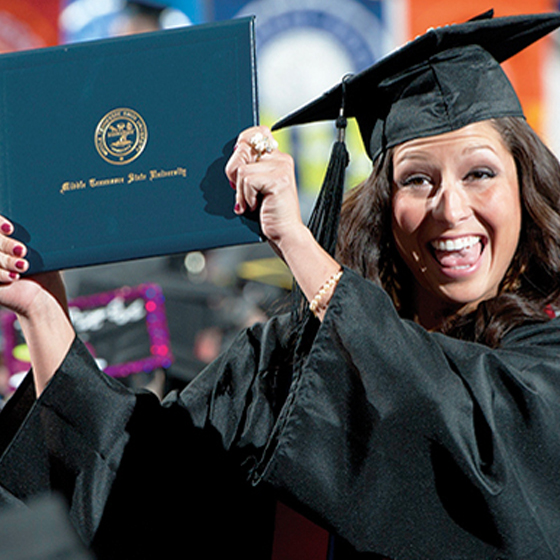Making Student Success a Priority
| August 24, 2012
Filed Under: President's Post

As we embark on our second century, we are well positioned to build on our success and cement our reputation as Tennessee’s Best comprehensive university.
But there is much more to do if we are to reach our full potential.
As you well know, the state’s funding formula for universities has changed. With the passage of the Complete College Tennessee Act, our state appropriation is now based on retention and graduation rates, not enrollment.
This change has prompted MTSU, as well as all of the state’s public institutions of higher education, to rethink our operations and structure.
The funding formula makes it more important than ever for us to focus on attracting more students who are best equipped for college and are most likely to graduate.
And it becomes critical that we continue to develop effective support systems that will help all our students succeed.
It is also time for us to again take a strong, careful look at the size of our institution and to consider the following questions and issues:
- What should be our maximum enrollment?
- How does that number balance with our resources and standards?
The Strategic Plan for Enrollment Management, currently in draft form, is now before the Faculty Senate and others for feedback.
It addresses several critical questions, among them:
- Should we slow the growth of our freshman class?
- Can we better target high-achievers by slightly raising academic standards for guaranteed undergraduate admission?
- Should we continue to increase the number of graduate students, who earn their diplomas more quickly and reliably than undergraduates?
- Should we continue to aggressively pursue increasing the enrollment of more international students, a high achieving group, whose members generally complete their degrees on time?
- And should we continue to increase our recruitment efforts and scholarship dollars for transfer students, who have survived the so-called dropout years of early college?
Tinto put forward three very simple principles of “effective retention” and they are:
- Put student welfare ahead of other institutional goals. In other words, work first to take care of students and, most likely, most everything else will follow suit.
- Create and maintain retention tools and practices that help all students, not just some of them.
- AND build a sense of community and common values, which helps to build connection and belonging by students to the university.
A fascinating 2005 study by the American Association of State Colleges and Universities on best practices in student retention revealed several points that are worthy of reflection.
The successful universities profiled in the study worked to create a pervasive attitude that all students can succeed, reinforced by a wider culture of student engagement, on multiple levels. They were not content to rest on past success.
Recently, we have initiated some programs to help improve student success on our campus. For example:
• We started an Academic Alert program, which allows faculty to communicate directly with students about classroom performance and follow up on concerns. Last year, more than 27,000 early alerts were entered in this digital system.
• We have assigned all incoming students with Academic Counselors, in addition to their standard academic advisors. While advisors change each time a student changes majors, the student’s Academic Counselor is the one person they can turn to for help — from enrollment through graduation — regardless of what they study.
• AND…We are now deploying admissions advisors to major feeder community colleges in the region. Through this program, prospective transfer students have access—on their own campus—to MTSU staff through regularly maintained office hours at the community college.
These are just three of the many ideas that are in place or being developed that focus upon student success. Through these and other retention efforts, we hope to improve student performance and scholarship and target resources to students when they most need them.
But there is so much more to do. • If we sit on our hands and do nothing, we may fail to seize an opportunity that could define our second century.
Students will remember those faculty and staff members who challenged them the most, not the least. They will remember the people who reached out, who connected with them.
That is why I ask each of you to remember that no matter what you do, as a member of the faculty, staff or administration, all of us have a responsibility for student success.
Together, we make student success possible at Middle Tennessee State University.



